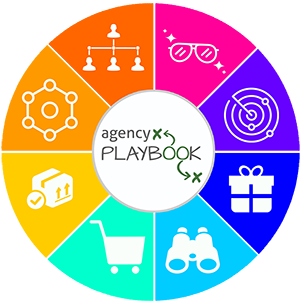How to End the Time Suck of Creating Proposals with Dylan Baskind | Ep #127
How to End the Time Suck of Creating Proposals
When it comes to creating proposals, you may find yourself spending hours upon hours trying to craft the best proposal you can to win that job. But if you are unsuccessful, you will find the time was wasteful.
In this episode, we’ll cover:
- The #1 tip for winning a proposal.
- 3 key elements of a successful proposal.
- A super cool tool to put an end to the time suck of creating proposals
Today’s guest on the show is Dylan Baskind, my first-ever guest from Down Under! (I think?!) He shares with us the key elements of creating killer proposals, as well as a way to save you time, energy and frustration on the whole process.
After nearly a decade as a software design/engineer consultant, Dylan had a long list of the things he hated about creating proposals. His proposals had landed him work with all types clients, from small, local ones to large, multinational ones but not without a tons of work and frustration. He wanted something simple yet attractive that would be customizable but uniform. Enter the solution called Qwilr, which Dylan is co-founder and is CEO…. I’ve messed around with this tool myself and it’s a pretty cool tool!
#1 Tip for Winning A Proposal
Case studies!
At the end of the day it comes down to numbers. When you present a proposal you are meeting with a business person who wants a specific business goal met. You need a success story that can prove you are the right person that can deliver the desired results with data to backup your claim.
We learned in our 2016 Future Outlook of Digital Agencies Report that brands want agencies to commit to specific results. Numbers don’t lie. So, Dylan’s advice is to use analytics and metrics and tell your success story in your proposal.
That can be easier said than done, though. If you can’t get a baseline from a prospect, it makes it much harder to prove the value and potential results of your work. However, if you can get them to measure “X” and you promise to deliver “Y” you’re golden.
3 Key Elements of a Successful Proposal
In addition to a case study, there are a few more keys to make your proposal a slam dunk. The upfront section should be dedicated to describing the client’s problem and your proposed solution.
Then, in this order, you want to include the following:
- Reformulate the problem using industry terminology. Rephrase the 3 I’s (Issue, Impact, and Importance) in your own lingo. This confirms that you understand what needs to be done and why.
- Tell a compelling story about your team and why their experience and qualifications make them uniquely suited to work on this project. This is the first time in the proposal where you should talk about yourself. Everything up until this point is about the prospect!
- Provide one call to action. A lot of times proposals offer a variety of 3-4 different options. Eliminate the confusion and make sure you have one single, very clear call to action.
[clickToTweet tweet=”Your #proposal is your most important touch point. Here’s how to get it right. ” quote=”Your proposal is your most important touch point. You have to get it right.”]
Your proposal is the face of your business. It used to be trendy office space created an impressive first look at a business. Today, with all things virtual and cloud-based, it’s now the proposal that makes the first real impression.
Dylan says your proposal has to be as good as your business – and it’s where you need to display your innovation and creativity. Meaning, if you’re a video production company your proposal has to have a video element. If you’re in web design it needs to include an actual site. This tactic serves as a dual purpose for both delivering proposal content and a sample of your work.
Crafting the Perfect Proposal
After 8 years Word and PowerPoint just wasn’t cutting it. Dylan says his proposal process was very organized but it was archaic. Since he is trained in both design and engineering he wanted his proposals to be both functional and pleasing to the eye.
Proposals = Major Time Suck
Major struggles included:
- Resizing images in PowerPoint or MS Word.
- Formatting issues when trying to paste an Excel chart into a Word Doc.
- Manual data entry of proposal pricing into accounting software.
- Pulling data from the proposals into the rest of Cloud-based agency business.
Sound familiar? 😉
Dylan created Qwilr as the solution to these problems and it has evolved into so much more. Qwilr saves ton of time, and includes design, quoting, analytics and internal communications features. It’s an interface between your business and the outside world.
It’s the little details that separate you from everyone else… you don’t have to be a designer to create gorgeous, user-friendly proposals.
Check out Qwilr.com/welcome/smartagency for a FREE TRIAL and special savings just for Smart Agency Master Class listeners.
What’s Next?
You may think that now you’ve improved your methods of creating proposals, what’s next?
Whether you need advice on growing your agency team, what you need to do as an agency owner or learn how to fast track growth for your agency, I can help.
Find all my tips, tricks and insights in my blog section that covers a wide variety of topics. Videos more your thing? You can check out the videos on my Youtube channel!

